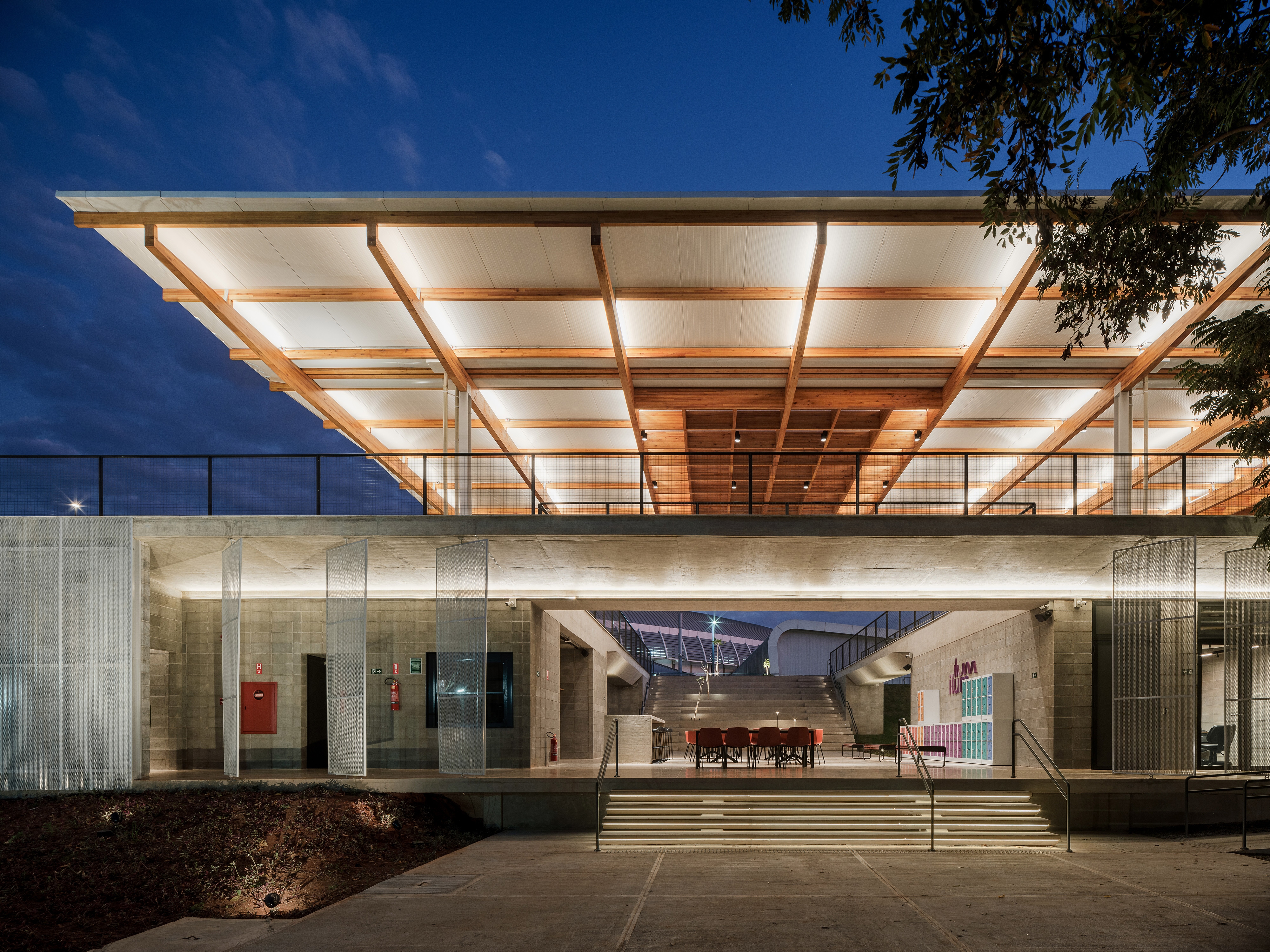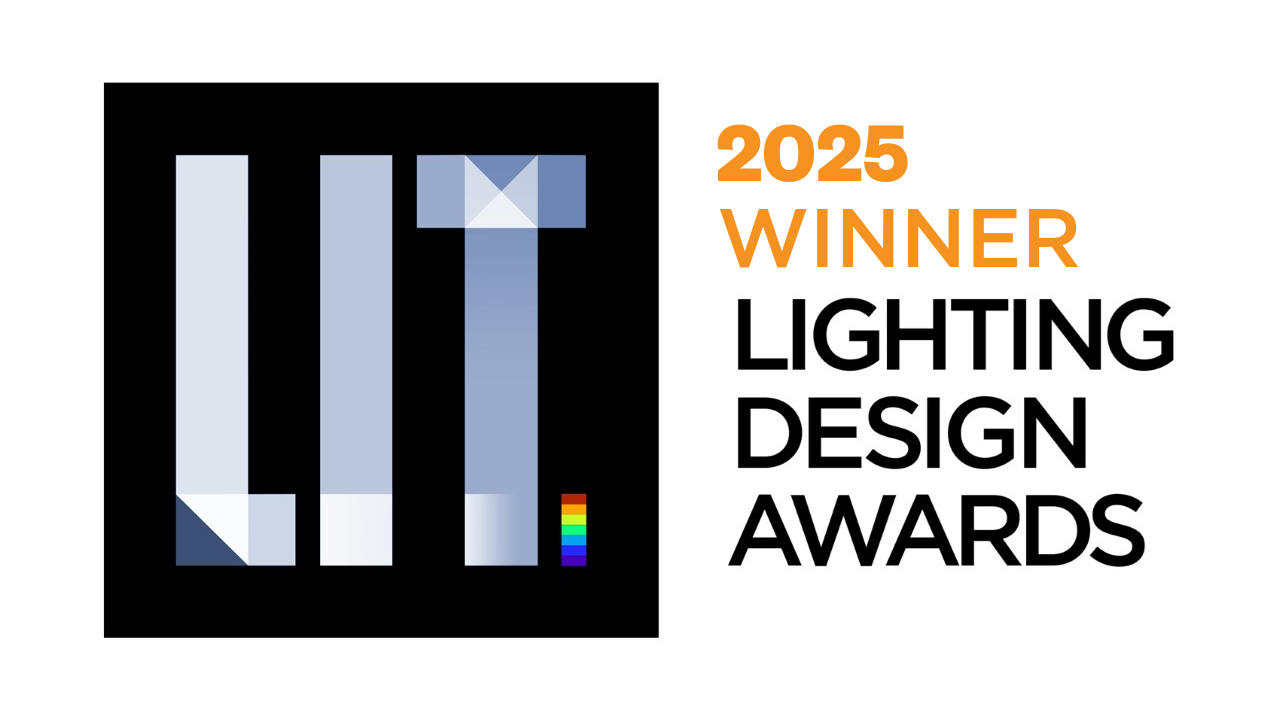Prize(s) Winners in Low Carbon Lighting
Lighting Design/Product Company Studio Symbios
Lead Designers Juliana Pellegrini
Other Designer's names Carolina Leme
Architecture Company 23 Sul Arquitetura
Interior Design Company 23 Sul Arquitetura
Client CNPEM – National Research Center for Energy and Materials
Photo Credits Pedro Kok
Completion Date August 2024
Project Location Campinas - São Paulo (Brazil)
Entry DescriptionThe ILUM Student Life Center emerges with a collective spirit, opening itself to nature. It acts as a bridge between the CNPEM campus and Sirius — the National Synchrotron Light Laboratory.
The architectural concept rests lightly on the site: a vast slab, open on all edges, extends in a subtle cantilever. The pavilion unfolds in two gestures: below, concentration — classrooms, library, auditorium, study patio; above, encounter — a suspended garden-slab, open to its surroundings and sheltered by a timber roof with opaque and translucent tiles, modulating the light.
If architecture settled gently on the ground, the lighting design amplifies that levity. Illumination becomes a narrative, almost ethereal: indirect light, lyrical by nature, finds in the reflective roof surfaces an ally. At ground level, it accentuates the slenderness of the concrete slab, dissolving its weight into grace.
Light respects the building’s authenticity, rooted in the purity of its materials. Luminaires remain discreet, concealed within architectural elements, yet precise in delivering functionality and comfort. In the patio and student garden, they nestle within the wooden grid; in classrooms, they align between buffers; in the auditorium, they dissolve among acoustic panels. Thus, the lighting design unveils the building in its wholeness — interpreting the architecture as its second skin of light.
Sustainability ApproachThe lighting design embraced a sustainable vocation, pursuing energy efficiency and the reduction of both operational and embodied carbon. Efficiency is expressed in an LPD of 5.2 W/m² — exceptionally low for buildings with classrooms and auditoriums, as referenced in ASHRAE Standard 90.1 — combined with dimming, sensors, and daylight, which together reduce energy consumption and the operational footprint. Regarding embodied carbon, careful specifications aimed to minimize resource use and material waste while advancing circular economy principles. The choice of local suppliers reduced transport emissions, while prioritizing materials such as aluminum — which in Brazil has a 98% recycling rate and is supported by a predominantly green energy matrix. Thus, the project reaffirms a commitment in which light becomes both narrative and instrument of environmental responsibility.


